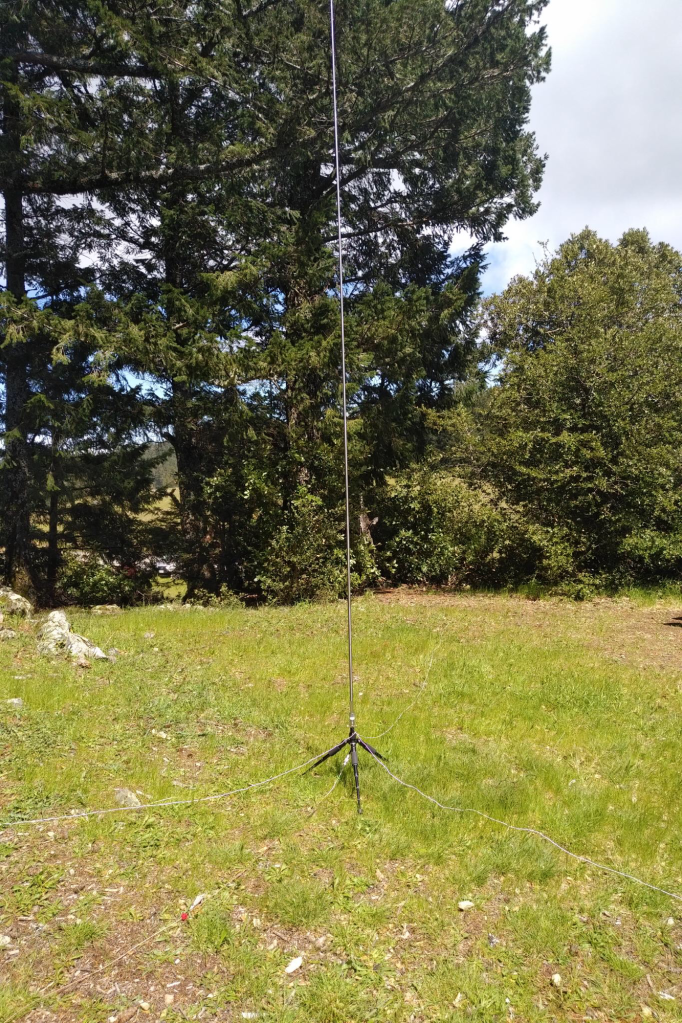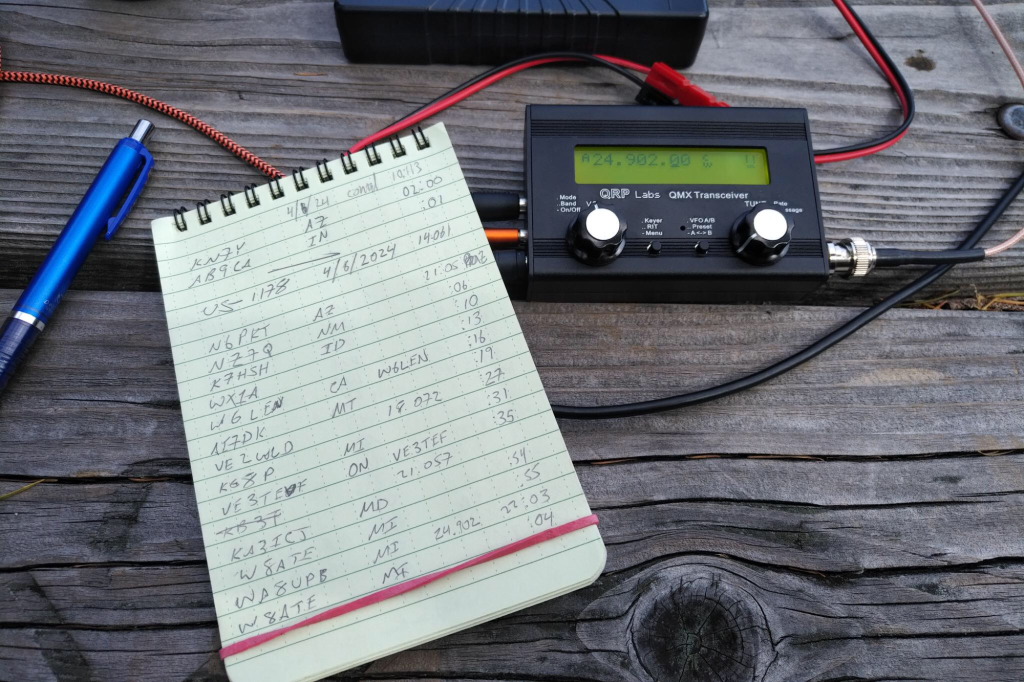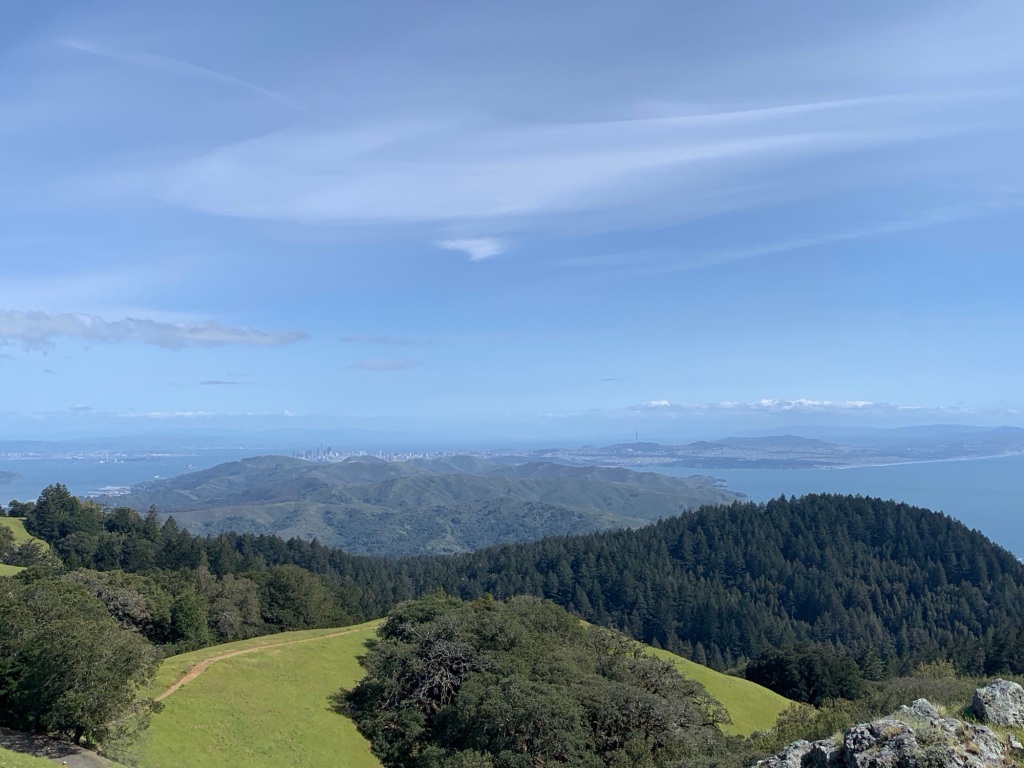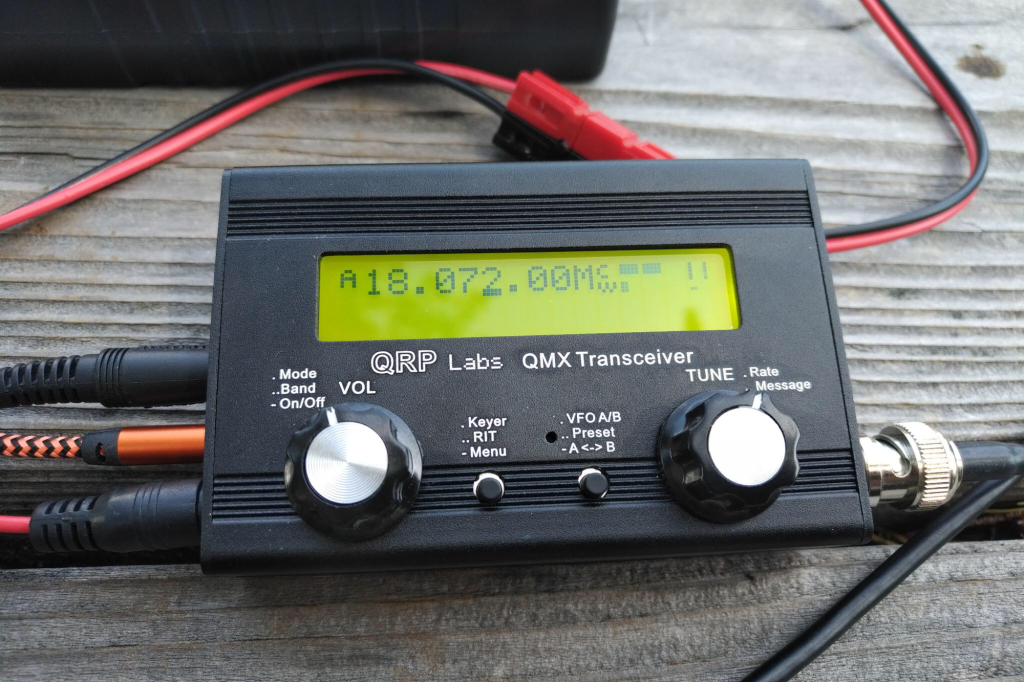Mount Tamalpais is a 2,571 foot landmark situated above Marin County in California’s coastal mountain range. Known locally as Mt. Tam, the mountain has been a refuge from busy city life in San Francisco for more than a hundred years. The Coast Miwok people, who lived around the mountain prior to European settlement of the Bay region, gave the mountain its name which roughly translates to “coast mountain.”

Earlier this year, in March 2024, it was my intention to activate Mt Tamalpais State Park (US-1178), however foul weather prevented me. Today the mountain was more inviting with lots of blue skies and mountainside grasses still green from Spring rains.

Just off West Ridgecrest Boulevard there is a picnic area set on a forested hilltop that offers a little elevation and tables to set up a field radio station. Though I had a 20 meter EFHW antenna, it seems the arborist throw line didn’t make it into the kit, so those good looking trees would not be able to support my antenna today.

Plan B for the antenna was a ground mounted vertical on a tripod. Winds were fairly light, and the trees surrounding the site offered some shelter to help keep the 17 foot telescoping whip from toppling over.

I’d forgotten how difficult the vertical antenna can be to tune up over the rocky, low conductivity ground on the mountain. In fact, without an antenna analyzer I was really having a hard time getting the MFJ whip to tune up. Eventually, I switched out the whip for the Gabil GRA-7350T loaded whip vertical which gave me better control over the tuning.

Up to this point, I’d taken the QMX radio on several POTA activations conducted from my vehicle at the Presidio of San Francisco National Historic Site (US-7889) but this would be the first time it saw use in the proper out of doors environment.

Knowing that cell service can be very spotty up on Mt. Tam I scheduled the activation ahead of time on pota.app. I was beginning to think the RBN was not going to pick me up so I took advantage of Sotamat to spot the activation using the Garmin inReach service.

The QMX performed well and after about an hour of operating, the activation was complete with a total of 13 QSOs spread across 20m, 17m, 15m, and 12m. I would have moved up to give 28 Mhz a try but signals weren’t all that great and it was starting to get a little chilly.

The wooded hillsides and grassy meadows of Mt. Tam are home to deer, elusive mountain lions, soaring hawks, and even wild turkeys. The rocky outcrops of Serpentine provide ample opportunity for a multitude of lizards to warm themselves in the strengthening springtime sun.

Here a single California Poppy, the official State flower, thrives in a crevice of Serpentine, the official State rock.

Mount Tamalpais offers colorful and surprising vistas of San Francisco and the Bay Area.

Leave a comment